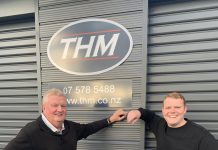The Transport Agency, alongside Tauranga City Council, is putting in roundabout metering at two key intersections in the city.
Traffic lights are being installed on two legs of the SH29A Barkes Corner roundabout; the Pyes Pa Road approach and SH29A Tauriko-bound approach; and the SH2 northbound approach to the Elizabeth Street roundabout. The traffic modelling shows, by using traffic lights to control the vehicles accessing the roundabouts during peak times, the length of queues and delays for those traveling in the opposite direction will be reduced. The work is part of a wider programme being implemented across the region to improve safety and journey times.
SAFETY TIP:
Standard give-way rules still apply when entering the roundabouts. The traffic lights do not mean that the roundabouts are signalised like the Maungatapu roundabout (SH29A).
What is roundabout metering?
Roundabout metering is used for controlling vehicles entering a roundabout. Traffic lights are installed at least 25 metres away from the roundabout intersection, and manage the flow of traffic entering the roundabout.
How do the lights work?
The traffic lights are green 24/7, until they are triggered to turn red during peak times holding the traffic until the lights turn green to allow them through again. Once the traffic lights have turned green, traffic will continue to flow until the red light is triggered again. The red phase is short and will turn green before another large queue is created.
Why use roundabout metering?
This method is used when one road accessing the roundabout has a higher number of vehicles compared to the other roads, causing delays on the other roads entering the roundabout. By holding back the traffic entering from the right of the busiest road we can create an opportunity for a larger number of vehicles to pass through the roundabout.
How will it improve your trip?
Roundabout metering will improve the morning and evening peaks by controlling the traffic flow entering the roundabout and spread the queuing on each leg more efficiently. Most of the time the traffic lights will be green, except when high traffic queues activate the metering, then they will turn red to hold the vehicles in one direction, allowing the queue in the other to be reduced.
What is the difference between ramp metering and roundabout metering?
Roundabout metering works differently to ramp metering, as seen on Auckland’s motorways. Ramp metering allows one vehicle for each green light. Roundabout metering traffic lights are on 24/7 and stay green until they are triggered to turn red, during peak times, holding the traffic until it flows, and the green light allows them through again.




































































